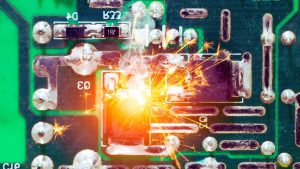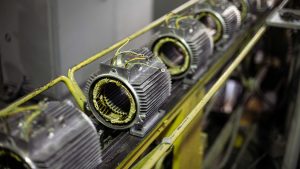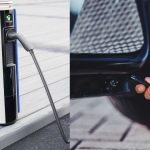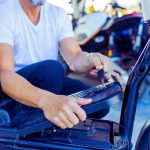Did you ride your scooter through really heavy rain? Or did you go across a deep, splashy puddle? Bad news – water is super bad for the electrical wires and parts hiding inside e-scooters! Any tiny openings let water sneak in easily. Drips or dampness over time start making the wires crumble up. Then your zippy scooter suddenly stops zooming.
It might look hopeless when your scooter won’t even turn on anymore. But trying to fix electric scooter water damage it is better than buying a brand new one! First, get that thing dried out completely inside. Carefully peek at the wires and small parts once it air dries. Scrub any scary moldy-looking green stuff off. Check the power button and gas pedal too. If they still don’t work after that, you may need new wires or chips put inside. Water can short circuit the electronics or cause corrosion over time. Thankfully, there are steps you can take to fix water damage on your electric scooter and get it running again.
Assessing the Damage
For electric scooter batteries damaged by water, refer to the manufacturer’s guidelines as these can be dangerous to handle. You may need to replace the battery.
The first step is to assess the extent of the water damage:
1. Let it Dry Out
If your scooter got splashed or was out in light rain, let it dry thoroughly for at least 24 hours before trying to use it or taking any components apart. This gives time for water to evaporate.
2. Check Electronics
Take off the deck or open any compartments to inspect electronic components for water residue, corrosion, or shorts. Look for issues like:
- White/green corrosion on wires or circuit boards
- Burnt out or shorted wires
- Non-working lights, throttle, brakes etc.
3. Check Mechanical Parts
Water can also damage mechanical parts like brakes or the motor. Test the brakes, accelerator and lights. Spin the wheels to check for scraping noises that indicate water in the motor.
Cleaning and Drying Components
If water got inside but there is no major corrosion, you may be able to revive components by thoroughly cleaning and drying them:
1. Wipe Down Components
Carefully wipe off any circuit boards, connectors, wires and mechanical parts to remove residue. Absorb excess moisture with a soft cloth.
2. Air Dry Parts
Allow components to dry fully in a warm area with good airflow for at least 48 hours. You can also use a fan to speed up drying.
3. Check Battery
For electric scooter batteries damaged by water, refer to the manufacturer’s guidelines as these can be dangerous to handle. You may need to replace the battery.
4. Clean Corroded Areas
Use isopropyl alcohol and an old toothbrush to gently remove any white/green corrosion without damaging circuit boards further.
Fixing Electrical Issues
Fuses help prevent shorts from damaging the whole electrical system. But often the fuse sacrifices itself. Replace any burnt out fuses.
If cleaning doesn’t restore functionality, look for:
1. Burnt Out Fuses
Fuses help prevent shorts from damaging the whole electrical system. But often the fuse sacrifices itself. Replace any burnt out fuses.
2. Damaged Wiring

Check for areas of damaged insulation or bare wires that can short out, overheat or stop power flow. You may need to replace wires.
3. Short Circuits

If there was major water exposure, water likely caused short circuits across components and circuit boards. This requires replacement of damaged parts.
4. Corroded Connections
Check where connectors join into ports on circuit boards or motors. Corrosion interrupts the electrical connection. Clean off deposits or replace connectors.
Replacing Parts
Some water damage like shorts, burnt out motors or complex corrosion leave you no choice but to replace parts:
1. Motors

Water in the motor windings causes corrosion and scraping. Replace a damaged motor with manufacturer’s official parts.
2. Controllers
The controllers regulate power between components. Water can short these out. Swap in new motor, lighting, brake or other controllers.
3. Circuit Boards
If water seeped under chips on circuit boards or traces are damaged, replacement is needed. Source direct OEM boards when possible.
4. Other Electronics
Fuses, wiring, lights, switches and thumb throttles affected by water also often need replacing with new parts.
Preventing Future Water Damage
After fixing your scooter, keep water out going forward:
1. Weatherproof Components
Seal electronics compartments, apply dielectric grease to contacts and use protective sprays for added weatherproofing.
2. Ride Carefully Around Water
Avoid deep puddles which splash internally. Slow your speed if riding in wet conditions.
3. Clean After Exposure
Gently wipe down the scooter and use a fan to dry off any external water if you do get caught out.
4. Store Indoors
Keep your electric scooter sheltered from rain and snow whenever possible to limit water exposure.
Water damage can temporarily knock out an electric scooter but with some effort troubleshooting and replacing parts, you can often get performance restored. Avoid riding through deep water and take preventative steps like weatherproofing components or storing the scooter indoors.
Conclusion:
Getting caught out in the rain or taking an accidental splash down a puddle can lead to pesky water damage in electric scooters. But with some diligent troubleshooting to assess the issues, proper cleaning and drying of parts, fixing electrical problems, and replacing damaged components, you can likely resuscitate your water-logged scooter. Carefully inspect the wiring, circuits, motor and other electronics for corrosion, burns, or broken connections.
Frequently Asked Questions:
What are the most critical parts of an electric scooter to keep dry?
The electronics like the controller, throttle, brakes, and lighting are most vulnerable to water damage. Batteries can also be dangerous if they get wet. Keeping these components protected from water and drying them quickly is key.
Is it safe to ride an electric scooter if it got splashed but still seems to work?
No, you should thoroughly dry it out first even if it seems fine. Water could be trapped internally and could short out components once electrical contact happens. Let it dry for 24 hours before riding to be safe.
How do I dry out an electric scooter battery that got wet?
It’s best not to try drying a wet lithium battery yourself. The chemical process to manufacture lithium cells makes them volatile if damaged. Follow the manufacturer’s recommendations, which usually involve replacing wet batteries.
What are signs my electric scooter’s motor has water damage?
Symptoms can include scraping noises when spinning the wheel, reduced performance, an inability to spin freely or start moving. Corrosion deposits around the axle or inside the motor windings can also indicate water damage.
Is it possible to fully weatherproof electric scooter electronics?
While you can waterproof to a degree with sealants and protective sprays, it’s hard to make electronics 100% impervious, especially with continual exposure. Take preventative measures but also inspect and clean after riding in wet conditions.
If my electric brake lever isn’t working, could water damage be the cause?
Yes, moisture can prevent the brake lever sending the proper electrical signal to the braking components or reach the brake line and cause corrosion or shorts. Take apart, clean and dry the brake system to fix such issues.





